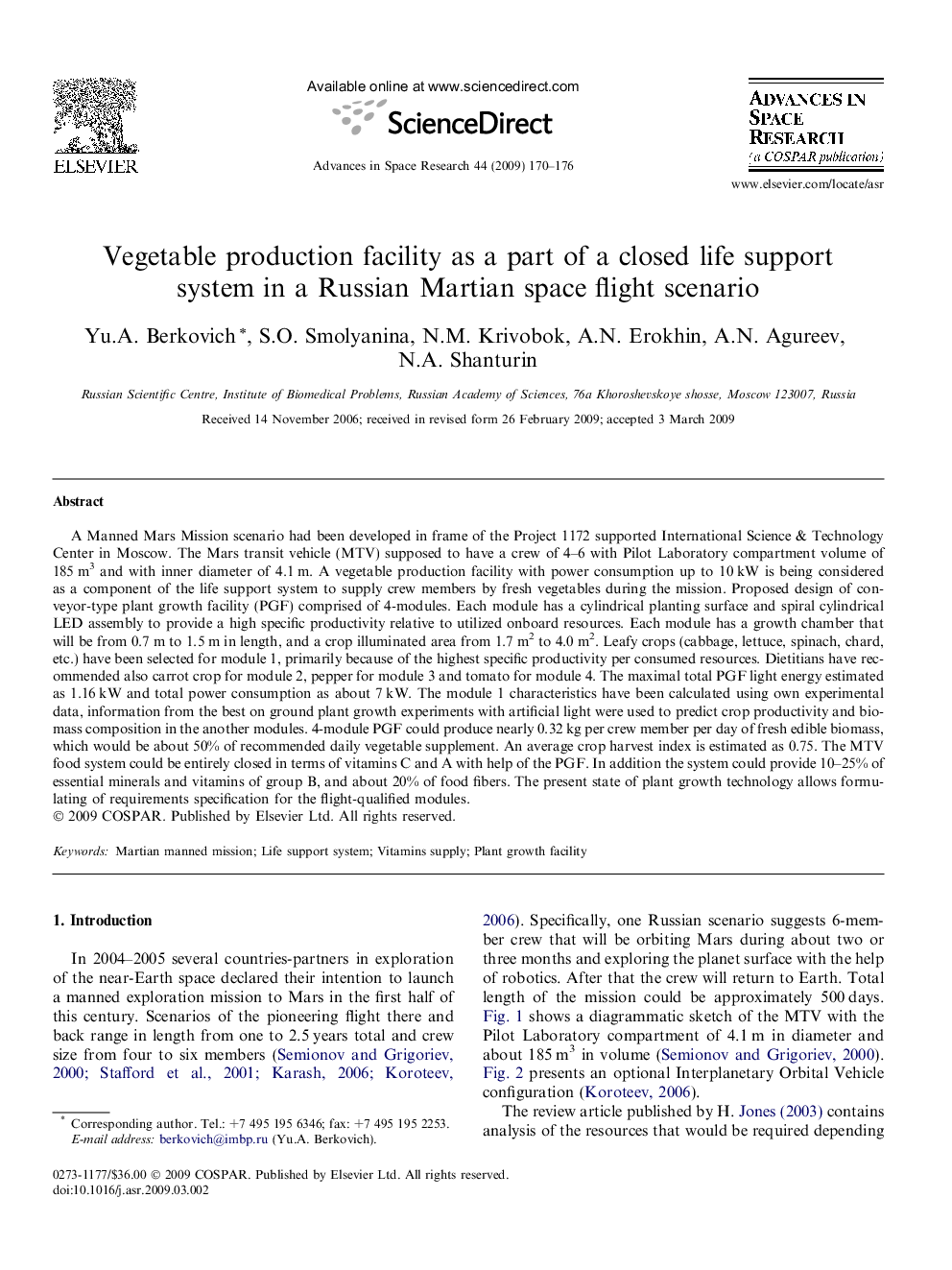| Article ID | Journal | Published Year | Pages | File Type |
|---|---|---|---|---|
| 1767165 | Advances in Space Research | 2009 | 7 Pages |
A Manned Mars Mission scenario had been developed in frame of the Project 1172 supported International Science & Technology Center in Moscow. The Mars transit vehicle (MTV) supposed to have a crew of 4–6 with Pilot Laboratory compartment volume of 185 m3 and with inner diameter of 4.1 m. A vegetable production facility with power consumption up to 10 kW is being considered as a component of the life support system to supply crew members by fresh vegetables during the mission. Proposed design of conveyor-type plant growth facility (PGF) comprised of 4-modules. Each module has a cylindrical planting surface and spiral cylindrical LED assembly to provide a high specific productivity relative to utilized onboard resources. Each module has a growth chamber that will be from 0.7 m to 1.5 m in length, and a crop illuminated area from 1.7 m2 to 4.0 m2. Leafy crops (cabbage, lettuce, spinach, chard, etc.) have been selected for module 1, primarily because of the highest specific productivity per consumed resources. Dietitians have recommended also carrot crop for module 2, pepper for module 3 and tomato for module 4. The maximal total PGF light energy estimated as 1.16 kW and total power consumption as about 7 kW. The module 1 characteristics have been calculated using own experimental data, information from the best on ground plant growth experiments with artificial light were used to predict crop productivity and biomass composition in the another modules. 4-module PGF could produce nearly 0.32 kg per crew member per day of fresh edible biomass, which would be about 50% of recommended daily vegetable supplement. An average crop harvest index is estimated as 0.75. The MTV food system could be entirely closed in terms of vitamins C and A with help of the PGF. In addition the system could provide 10–25% of essential minerals and vitamins of group B, and about 20% of food fibers. The present state of plant growth technology allows formulating of requirements specification for the flight-qualified modules.
